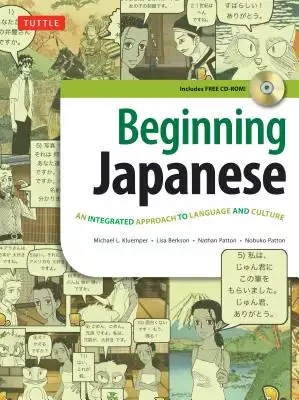Beginning Mandarin Chinese Characters: Learn 300 Chinese Characters and 1200 Chinese Words Through Interactive Activities and Ex
為了解決how to pronounce nap的問題,作者Liao, Haohsiang/ Zhou, Kang 這樣論述:
Learn the essential Mandarin Chinese characters and words in everyday use in China Anyone planning to learn Chinese knows that there are 300 primary characters they must understand to function in China. This systematic introduction to the Mandarin language is designed to help you learn them fast--al
ong with how to pronounce, write, and remember 1,200 key vocabulary words and phrases. Essential for anyone wishing to pass the official Chinese government HSK Level 1 & 2 proficiency exam or the Advanced Placement (AP) Chinese Language and Culture Exam, Beginning Mandarin Chinese Characters present
s these 300 characters in a series of very simple and easy lessons: The Chinese characters are grouped into themes with a warm-up narrative for each one Each character's pronunciation and meanings in combination with other characters are presented Exercises to practice recognizing the characters an
d using the vocabulary are provided Writing guides show you how to write each correctly Includes easy access to online native speaker audio recordings and free, printable flashcardsThis straightforward, easy-to-use resource is ideal for test-prep and mastering essential vocabulary, pronunciation and
writing. With useful English, Pinyin and Mandarin characters, this book helps you to use what you learn both within a formal classroom setting and in real-life situations in China.
Dr. Haohsiang Liao is Senior Lecturer of Chinese Studies in charge of the Chinese Language Program at MIT. Before jo
ining MIT, he taught at various institutions including Williams, Harvard and Ohio State. Kang Zhou is Lecturer in Chinese at MIT. Before joining MIT, he taught at Brown, Williams and Harvard University.
新住民家庭幼兒大班升小一暑假活動安排:中國大陸及東南亞新住民母親之比較
為了解決how to pronounce nap的問題,作者范穎芳 這樣論述:
在臺灣,幼兒「學習注音符號」是學者、教師、家長等皆十分關注的議題,但不曾有研究探討以家庭作為活動的提供者,新住民幼兒會於幼小銜接的暑假參與哪些活動,以及新住民母親對於幼兒幼小銜接階段的教養觀點為何?因此本研究之主要目的為呈現新住民幼兒於大班升小一的暑假生活樣貌,並聚焦在新住民母親安排幼兒此暑假的歷程與想法。本研究之研究對象為居住在臺北市及新北市的五個中國大陸及五個東南亞新住民家庭成員,包括母親、大班幼兒、丈夫或婆婆共三十人,以半結構式訪談及參與觀察的方式來蒐集資料,透過資料彙整、編碼與分析而歸納出本研究之結果:一、新住民大班幼兒的暑假生活因家庭社經背景而有不同的樣貌,但皆出現預先學習小學課程
的活動,且以參加私立正音班為主。二、安排幼兒大班升小一暑假活動反映出新住民母親對暑假的看法,而不同國籍新住民母親適應語言、回應臺灣教育制度上的差距使母親對幼兒進入小學產生不同的感受並抱有不同的教育期待。三、不同國籍新住民母親安排幼兒暑假活動的決策自主性受到家庭社經背景、家務分工模式及家人介入程度而有所不同。四、新住民母親安排暑假活動的想法與行動具有一致性,並因為能實踐自身教養信念、幼兒暑假活動具有學習成效而獲得正向感受。
Beginning Japanese: An Integrated Approach to Language and Culture
為了解決how to pronounce nap的問題,作者Kluemper, Michael L./ Berkson, Lisa/ Patton, Nathan/ Patton, Nob 這樣論述:
Beginning Japanese is a complete Japanese textbook and language learning package for beginning learners.Start speaking, reading and writing Japanese today with the most exciting new introduction to the Japanese language It follows the story of Kiara, an American exchange student who lives in Japan
and loves to study Japanese. With the help of her Japanese friends and the time-traveling Tomo Tanuki (raccoon dog), Kiara learns to speak, read, and write Japanese while she visits famous people and places in Japanese history. Illustrated with manga-style comics--a fun way to learn Japanese and wri
tten by experienced high-school Japanese teachers, this Japanese textbook will show you how to pronounce Japanese; read and write hiragana, katakana, and 125 essential kanji; and understand conversational Japanese. Key features of this program: An engaging storyline--including a time travel adventu
re--unfolds as learners advance, adding motivation to master the language. Authentic written, visual, and oral materials embedded naturally throughout. Kanji is taught beginning with Chapter 1--and together with current vocabulary rather than separately. (At the end of Vol. 1 you'll know 151 kanji).
Technology is used extensively for authentic tasks. A dedicated website provides additional content and updates. Content is aligned with the ACTFL National Standards.The CD-ROM includes: Native Japanese language speakers. Pronunciation guides. Accompanying dialogues. New word lists. Fun songs. Lis
tening activities and tests. Extensive printable exercises.The Beginning Japanese Website includes: Online games and activities. Additional information and updates. Downloadable Hiragana Practice Book, Katakana Practice Book, kana practice sheets. Downloadable kanji and kana flashcards.Beginning Ja
panese is the first volume in a 2-level series. Deepen your learning with the Beginning Japanese Workbook, a volume of drills and exercises that reinforce the lessons in the textbook. If you already speak basic Japanese, continue your learning with the second level, Intermediate Japanese. Whether yo
u're learning Japanese for fun, preparing for a Japanese proficiency exam, or want to achieve AP- or IB-level competency, Beginning Japanese is your key to becoming a confident Japanese-speaker.
Michael L. Kluemper served as a board member of the National Council of Japanese Language Teachers from
2001-2008, and has worked on national task forces for the implementation of a Japanese AP course. He lives in Louisville, KY. Lisa Berkson was honored by the Association of Indiana Teachers of Japanese as the language teacher of the year in 2007. She currently teaches Japanese and Chinese language
classes at Dobson High School in Mesa, AZ. Nathan Patton teaches Japanese language at Scott County High School in Georgetown, KY where he serves as Chair of the World Language Department. Nobuko Patton has taught Japanese at the University of Kentucky, Georgetown College and Jessie Clark Middle Scho
ol in Lexington, KY. She lives in Kentucky.
免疫療法、血管新生抑制劑及化療於晚期非小細胞肺癌之療效暨安全性比較:系統性回顧及網絡統合分析
為了解決how to pronounce nap的問題,作者楊佳璉 這樣論述:
肺癌是十大癌症死亡原因之一,因為早期大多無症狀,所以很多病人在晚期才被診斷出來,儘管給予晚期肺癌病人治療,病人的存活率仍然偏低,因此若要改善病人存活率,發展新的機轉是有必要性的,隨著疾病治療的發展,血管新生抑制劑和免疫療法是備受討論且具有前景的機轉。過去有文獻對兩大抗癌的機轉與化學治療的機轉進行藥效和安全性的比較,然而因為缺乏所有藥物比較的證據,因此關於藥物之間藥效和安全性的比較仍不明確,因此本論文將使用系統性回顧以及網絡統合分析的方式來比較血管新生抑制劑、免疫療法藥物與化療藥物在晚期非小細胞肺癌的藥效和安全性。隨機分派的臨床試驗文獻會從PubMed, CENTRAL和ClinicalTri
al.gov進行搜尋,符合納入條件的文章,會進行方法學的評估並納入直接性統合分析和網絡統合分析。直接性統合分析採用隨機效應模型,網絡統合分析會採用貝氏模型,並依據網絡統合分析的結果對藥物進行藥效和安全性的排序,除此之外,本研究會評估研究間結果是否有異質性與出版性偏差,且利用敏感性分析來評估結果的穩健度。統計分析使用的軟體是Revman5.3和R-software 3.4.1。總共有39篇文章納入,36篇為發表的文章,1篇為未發表的文章,其餘2篇則為會議摘要。有納入的藥物,如下所述;Platinum doublets (cisplatin 或 carboplatin), 免疫療法 (ipilim
umab, pembrolizumab nivolumab或atezolizumab), 血管新生抑制劑 (Bevacizumab, Ramucirumab, sorafenib, vandetanib, axitinib, ASA 404 或 motesanib, cediranib , nintedanib, NGR-hTNF)。目前的分析結果顯示,第一線治療和後續治療使用抑制細胞程式死亡-1(PD-1)比傳統化療更能改善死亡風險和惡化風險,除此之外相較於血管新生抑制劑和化療,免疫療法在嚴重副作用有比較低的風險。從目前的結果來看,與血管新生抑制劑及化療相比,細胞程式死亡-1抑制劑(PD-1
inhibitor)是作為治療晚期非小細胞肺癌較佳的選擇。

